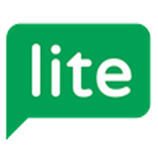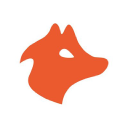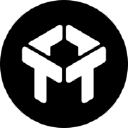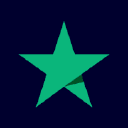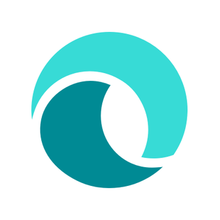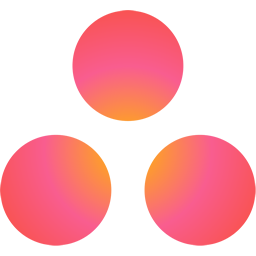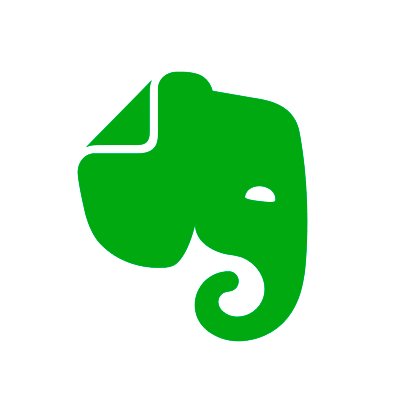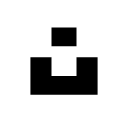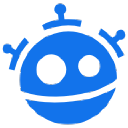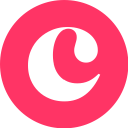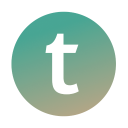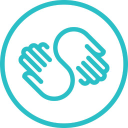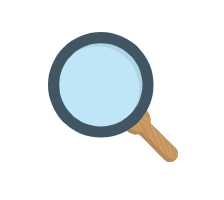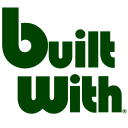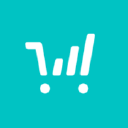
How I Started A $7K/Month Uber For Graphic Designs
Hello! Who are you and what business did you start?
Hey guys, I’m Marilyn Wo from Singapore. Together with my husband, we co-founded MeetAnders, a productized graphic design company.
I started this business in 2015 after having been a freelance graphic designer for 10 years.
In the past, I used to provide customized designs for every client, just like how a typical service-based business is run. MeetAnders in contrast was started with predefined design packages in mind, designed to be sold like products on a subscription model.
We provide unlimited graphic design for just one fixed-fee a month. Similar to hiring an in-house designer, you are assigned one designer, and you can ask for as many requests and revisions as you want, no additional fees required.
We have been serving event directors, CMOs (Chief Marketing Officers), Head of Marketing, digital marketers, startup founders, and coaches. These are people who are in urgent need of manpower to help design their marketing materials on a daily basis.
When we first launched, we didn’t hire a designer because we were short of cash and we didn’t know how to delegate efficiently. So my husband, Anders and I did all the work. Anders was the more creative one. Hence, the name “MeetAnders”.
Back then, with just the two of us, we knew we couldn’t handle more than a handful of customers. At the same time, we didn’t want to grow too fast, risking the chance of hurting the quality of our work.
Then in 2017, I had my second child. Besides juggling with two kids as non-professional jugglers, we were struggling with $2,000 or less in our banks trying to whip up a scalable quality control system.
Now, 5 years down the road, we figured that out and finally grew to a three-man team with $7,000 in monthly recurring revenue and growing.

What's your backstory and how did you come up with the idea?
When my kid was born in 2013, there was no way for me to be serving my clients while babysitting. That’s when I realized my business couldn’t run without me.
Our customer acquisition relied solely on referrals. We had enough referrals coming to keep us busy. But because I was drowning in a sea of day-to-day tasks, that didn’t leave me time to set up a proper lead generation system.
I was the bottleneck in all areas of it.
To make matters worse, in the same year, we just got our new home, lost all our clients, and found ourselves half a million dollars in debt.
Thinking maybe design isn’t right for me, I wanted to stay out of the design and tried to create other tech products. I was so convinced that services can never be scaled.
Then I started searching for terms like “recurring income” and came across Brian Casel’s content about productized services. Thinking there’s more on the web, I went on to search for examples of “productized services”.
That was when I came across the 7-Day Startup book by Dan Norris, co-founder of WP Curve. I bought the book and joined his Facebook Group (now called “Dan’s Mastermind”).
Within Dan’s community, there were many who have grown their businesses to more than $100,000 in monthly revenue doing productized services.
At that time, there were a few productized design companies already doing very well, such as Design Pickle, Brand Strong, and Undullify.
With their ongoing conversations, that made me realize since I’ve got more than 10 years of experience in design, this is something I’ve got sufficient expertise in. It’s easier for me to create systems in this area than starting anything new from scratch.
In 2015, I started a graphic design startup that provides unlimited graphic design services on a monthly fixed-rate.
I didn’t have to come up with any up-front capital to make anything. I just started by contacting a few of my previous clients to ask them if they needed help. Then I told them this is what we offer now, if they try it now, they get an early bird discount.
With a few of them taking up the offer, I knew this is something people will want.
Since then, my team has worked on thousands of tasks for customers who’ve stayed with us for years.
Take us through the process of designing, prototyping, and manufacturing your first product.
In the beginning, my mind was everywhere, I had no coach, no answers, and may not have the right questions.
Thanks to the experts in Dan’s community, they told me to find what’s the most common problem my clients are facing. Just one recurring painful problem, not two or three. Then package up a set of solutions to solve that one problem and sell it.
This was the hardest part for me to start because I used to provide every design solution I can think of to all my clients.
From logo design to editing business cards and to illustrations. You name it! Rather than having to proactively strategize something for others, it was easier for me to just receive instructions from my clients, do the work and deliver it.
Thanks to Dan’s commitment in providing his best resources and his group member’s generous advice, I got started by first listing out all the things I’ve been working on with my clients.
That’s when I realized, the most common pressing issue they need help with on a regular basis is graphic editing help. Changes always have to be made to their artwork and they can’t wait to hand them to me to save themselves time and effort all the time.
It makes sense to put monthly pricing to it. It’s like a “WP Curve for simple graphic design”!
Starting this needs more time than money. The barrier to entry is very low, that also means standing out is not easy. Graphic design has been highly commoditized, so getting the pricing and offerings right can help differentiate one from the other.
We changed our pricing a few times, from $288 to $570, and many tiers and plans down to just two.
Our pricing was decided based on two factors:
- 1. Our financial projection on paper. Knowing what we want to earn, how much is it to hire designers, our operating costs, and taxes. See the sample as shown below.

This is a sample estimate projection. Resource originated from 7-Day Startup by Dan Norris
- 2. If CMOs, Head of Marketing, and startup founders were to hire in-house designers, they will compare our prices. Hence we should be offering something up to half of what in-house designers are paid in the market.
Here’s me and one of my first colleagues in 2017:

Describe the process of launching the business.
We’ve never truly taken off until 2018. Before that, we did everything from multiple launches, social media posting, and anything that does not scale. It was so hard for us because we didn’t have a solid strategy in place.
Without designers taking over our client fulfillment, every launch was a flop. We wanted growth and more customers, but we didn’t dare take on too much.
Also, I had too much on my plate: client fulfillment, delivery of design work, and customer service. Anders handles the creative work for our clients and the financial side of things.
One day we can have 10 customers, another day 5, down to 3 and up to 5 again.
Our customer acquisition relied solely on referrals. We had enough referrals coming to keep us busy, which is a good thing for us. But because I was drowning in a sea of day-to-day tasks, that didn’t leave me time to set up a proper lead generation system.
Without a proper lead generation system, we aren’t confident of hiring designers, because we aren’t sure when the next referred customer will sign up. And without hiring help, we only have so much time to help a limited number of people.
One fine day, our referrals went dry and stopped flowing in. We didn’t know what to do. I did personal one-to-one outreach. Anyone I’ve reached out to automatically build a wall the minute they know that we do design work.
I didn’t know how to build trust.
That’s when I came up with a 30-day free trial for first-time customers. It worked to help get the word out and allow more people to try us out. Knowing that we can help them, some of them carried on for many more months.
That said, there were also some people who took advantage of the free month to complete one-off projects whom I’ve never heard from since then.
In the early days, if anyone wants to work with us, we are more than happy to. We needed leads and cash flow. But that also led to churn because they happen to only need design help once.
We started this business to earn recurring income but ended up going back to square one every month, looking for new customers to replace those who left.
Those days were discouraging and hopeless.
I must say we could have done better to grow faster in the early days, but on the flip side, our slow growth has helped us find a way to bake in fast and quality work into the process.
Since launch, what has worked to attract and retain customers?
We haven’t done any paid advertising so far.
In 2018, I started creating content and publishing on Medium. My coach Lydia Lee of Screw The Cubicle told me that’s a great place to start to build an audience.
She was right!
I didn’t have any success stories to brag about, so I wrote about my journey towards starting my productized business while raising two kids.
People started resonating and responded with questions. Those questions gave me ideas to create more content and that led some of them to work with me.
I’ve also posted on Facebook Groups to ask for feedback and some brought tons of eyeballs and leads. That also led to some of them working with me to this day.
Here’s a screenshot of one of those posts:

While posting on Facebook Group helped bring in some customers, it didn't help for very long. Reason being the platform is too crowded especially for design-related posts and comments, each post gets lost and forgotten very quickly.
When one asks for recommendations for a good designer, one post can have hundreds of comments. There are many great designers out there, which is a good thing, but I find it hard to stand out.
That was also the time I started to post daily on Linkedin. I was also active in making more meaningful connections with my network on this platform.
Posting on Linkedin has to be a consistent effort. You don’t have to post everyday, but it has to be done at least three times a week to remind people who you are and how you can help.
I’ve also offered a free Linkedin banner design that helped bring some attention and customers to the door:

Free graphics and offers like our 30-day free trials do help to a certain extent because nobody knows us, it’s hard for them to trust us as a reliable resource. But it was hard to retain them.
Most times we ended up working with people who are not a good fit and we experienced a high-churn rate due to that.
We then came up with 50% off the first month for first-time customers. This attracted more customers than when it was free. But we still have not seen growth as planned.
After making pricing adjustments and offers, we realized for us, the best way to retain customers is to create and curate content, then publish consistently on a platform where our audience is.
Pricing structures do matter, but the one thing that matters most is whether the person looking for long term ongoing design help knows if we exist or not.
When it comes to retention, one great way that works for us is to down-sell. We have customers who come to us to say our service is great but they don’t need that much design work anymore next month.
Instead of leaving them to unsubscribe, we offer them another plan that’s sort of a lower-tier that is priced lower and with fewer features, for example, longer turnaround times, lesser designs, etc.
This helps to retain more of them for longer.
The best way of retention so far has been to give our customers the best experience they can ever have within the expertise we can offer.
It’s not so much about making them happy, but being honest and transparent about our work process and being fair to every customer as much as we can.
How are you doing today and what does the future look like?
So far our gross margins are at 38%.
We have two plans that cost USD497 and USD1,028.
Our designers are from the Philippines and we pay them a salary of an average of USD800 per month.
We are always mindful of the salary we are offering. Our mission is to create jobs for as many designers as we can, their salary has to be sufficient for them to support their families.
These two years, we’ve been testing our operations on providing each customer with one designer and one project manager (team of two).
In a typical productized design environment, the designer does all the work and has to communicate with the customer at the same time.
This helps to lower operation costs, but we realized this takes focus away from the designer. Having them to respond to customers’ feedback in a tactful way while being busy with many tasks in a day leads them to burn out.
Our unique system of having a two-man team has been showing results and customers are loving it!
I must say we could have done better to grow faster in the early days, but on the flip side, our slow growth has helped us find a way to bake in fast and quality work into the process.
From this year onwards, we are doubling down on content with SEO, publishing on Linkedin and Medium, and building more partnerships to grow better.
See our analytics screenshot for the improvement in traffic due to our content and partnership efforts so far:

We are building more partnerships simply to help more people and businesses create more awesome designs with less time and money.
As we see COVID-19 coming to an end (always looking positive), we are looking to grow by 10% each month.
Focusing on competition is a waste of time. It’s best to channel your energy and time into knowing your potential customers better and creating your own uniqueness to differentiate yourself from others.
Through starting the business, have you learned anything particularly helpful or advantageous?
In 2018, after many failed attempts of just one startup, my coach Lydia Lee of Screw the Cubicle came to me and said, “You’ve got to do a time audit and block time off to connect with others”.
Sounds obvious, but it was hard to do because I wasn’t used to blocking time to connect with people. I was overly-comfortable being in the business, doing the work, and being part of operations rather than being the strategist.
I wasn’t comfortable with being less busy than before.
With Lydia’s guidance, I hired a designer to take over operations and design delivery. Then there was another problem. Every designer I’ve worked with couldn’t deliver anything close to what I could.
I had to redesign what they’ve done almost every time. Then I realized, I haven’t communicated what it means to produce a successful piece of design.
Then I created training videos and documented processes for them to use as guides for all the design work. That finally freed me from the day-to-day task to focus on sales and marketing.
Throughout this journey, I’ve learned:
- To set a few hours everyday to eat my frog before giving my time to anyone else
- People are my greatest assets
- Keep on marketing
What platform/tools do you use for your business?
Talking about tools, I was obsessed with tools at the wrong time for the wrong reasons. When starting out, I spent so much time signing up for trials like Intercom, Infusionsoft, ClickFunnels, HelpScout, Baremetrics, and many more.
Those tools are great, but they are expensive and overkill for starters. Many tools give promises to help you grow your business or help you save time, but that’s just a marketing message to their audience. They may not be for starters.
When they didn’t help me bring in more customers in the early days, I realized I only needed things like Google Sheet, Google Doc, Asana, or Trello.
Slowly as things change, as we grew, with more team members, we started to use these tools to increase productivity and automation:
- Loom - screen recording to cut down meetings and show processes
- Slack - real-time communication
- CloudApp - screen captures to do annotations and markups of artwork
- HelpNinja - Customer communication
- Drift - Live chat
- ThriveCart - Payment gateway and affiliate system
- Copper - Sales CRM
- LastPass - Give login access to the team without sharing passwords
- Slite - Documentation and processes
What have been the most influential books, podcasts, or other resources?
In the early days, the most influential books I’ve read were 7-Day Startup by Dan Norris and Built To Sell by John Warrillow.
While Built To Sell gives a strategic view on what it means to build an asset, to create a productized service, and run a business without being in it, it does not tell you how to do it.
In contrast, the 7-Day Startup book gives you everything you need to start in a week. It has all the details, simple enough for anyone to follow through.
Advice for other entrepreneurs who want to get started or are just starting out?
Starting a startup is not about coming up with an idea or solution before looking for people to buy the solution.
Instead of dreaming up ideas to work on, the best way to start is to find the people who have a common set of problems first.
Your customer sees the world differently than we do as business owners.
As a founder, it’s critical to identify your ideal customer first and constantly get into their heads to know what’s the problem they are facing before creating the solutions.
Hire right from the start because your only focus should be on sales.
One of the most important things in an early-stage startup is to stay afloat. “Cash flow is oxygen for any business.” - Gary Vaynerchuk
Don’t be the one to do the operations and delivery. Hire someone to take over the technical tasks from day one, and spend more time selling the service to as many people as possible in a day, everyday.
Focusing on competition is a waste of time.
It’s best to channel your energy and time into knowing your potential customers better and creating your own uniqueness to differentiate yourself from others.
Are you looking to hire for certain positions right now?
We are always looking for graphic designers who can also do simple illustrations, simple animations and are keen to take up a full-time position with us. Our work hours are 9 AM to 6 PM Singapore time, Mondays to Fridays.
We have a process and steps to know if we are a good fit for each other. Anyone keen can contact us and we will furnish you with further steps.
Where can we go to learn more?
If you have any questions or comments, drop a comment below!

Download the report and join our email newsletter packed with business ideas and money-making opportunities, backed by real-life case studies.

Download the report and join our email newsletter packed with business ideas and money-making opportunities, backed by real-life case studies.

Download the report and join our email newsletter packed with business ideas and money-making opportunities, backed by real-life case studies.

Download the report and join our email newsletter packed with business ideas and money-making opportunities, backed by real-life case studies.

Download the report and join our email newsletter packed with business ideas and money-making opportunities, backed by real-life case studies.

Download the report and join our email newsletter packed with business ideas and money-making opportunities, backed by real-life case studies.

Download the report and join our email newsletter packed with business ideas and money-making opportunities, backed by real-life case studies.

Download the report and join our email newsletter packed with business ideas and money-making opportunities, backed by real-life case studies.
